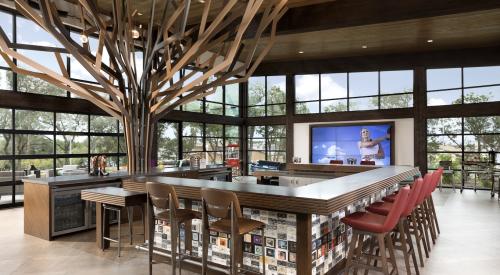There’s a perception that the housing market is getting better. For land developers who sell lots to home builders and for home builders who buy lots from developers, where is a sure-fire way to capitalize on that perception?
Successful developers know that they are in the retail business. They want to sell more home sites, sell them faster, at a greater profit, and have more demand for those home sites from successful builders. Likewise, builders want to sell more homes at higher profits, and both need to have an overall greater customer satisfaction level.
The most successful residential land developers in the country, regardless of size, operate with this mindset. What does it take? A cohesive, coordinated marketing and positioning program in which the developer cooperates with their primary customers — builders — by assisting them in reaching their primary customers — potential home buyers.
A land developer’s principal objective is to buy raw land at a wholesale price, finish it into buildable home sites, and sell them to builders at a retail price. With rare exception, the velocity at which home sites will sell to builders will be in direct proportion to how quickly builders will sell homes to their customers. Therefore, isn’t it in everyone’s best interest to create a “win-win” program to reach those consumers in the most efficient and effective manner possible?
As an example, a developer might sell a portion of their total home sites to a particular home builder, who may also commit to future buys in a takedown schedule. But if that builder isn’t as successful as they should be in reaching new-home prospects, they won’t have the mindset, or possibly the financial ability, to take down more lots.
Let’s create a scenario where the overall community is well-positioned within the marketplace, with a central information or sales facility, community advertising, and cohesive signage. This generates more consumer demand for homes in that particular community. As a result, builders sell homes faster and the developer realizes quicker returns. By creating higher sales velocity, prices may even justifiably increase.
When considering an overall marketing endeavor for a new-home community, take a hint from the way shopping center developers structure their promotional and positioning campaigns. The developer buys land, develops the center, and leases space to retailers. In turn, they receive a price per square foot for rent and typically a percentage of the merchant’s gross sales. Obviously, it’s in the developer’s best interest that those stores are successful, so the developer creates a budget for an advertising program to promote the shopping center as a destination.
A savvy residential land developer can accomplish the same result through a program designed to draw new-home prospects to the community. This could include all or part of the following: a well-designed website; a series of advertisements, billboards, and directional signs; on-site promotional events; targeted social media; direct mail; radio and television exposure; and a public relations campaign. All of these activities should be implemented as a result of a well-thought-through strategy, with the costs amortized over all the builders and the developer.
3 Essential Elements for Continuity
1. Central information facility. The community should have a centralized information arena, rather than the “divide and conquer” type of at-the-site sales operation, where builders and their salespeople/agents are pitted against one another in combat for sales. In this scenario, the salespeople end up presenting the house, not the location, lifestyle, amenities, and the like.
A central information facility can be staffed by a well-educated, trained sales team that knows how to sell the community benefits and amenities as a whole, and can provide further assistance in leading the prospect to the builder that most closely fits their needs. Then, the prospects will find on-site sales agents at each builder’s site that have detailed product knowledge — all coordinated so that they are open during consistent days and hours.
Another option is the central sales facility in which the sales agents not only sell community benefits, but also handle sales for each builder. With either option, customers no longer drive around in frustration because some models are open and others are not, with two or more different real-estate agents handling different builders’ homes.
By having a single, clearly visible, inviting information center where customers can learn about all the location and community benefits and the reputations of the builders in the community, buyers are sure to quickly find which builders offer homes that will meet their needs. If the builders have done the right job of positioning their products, through a combined market and positioning study, no two builders should be in direct competition with each other in terms of price point, size, and product type. Therefore, the participating builders should be offering a wide spectrum of design and price points. The retail site should be open for business seven days a week at a staffing level sufficient to provide face-to-face interaction with all potential buyers.
Training for all the salespeople, whether they are on site or in a central facility, is critical. Make sure all of them know what the expectations of the developer are, and stress the importance of not playing favorites among builders. Of course, when all builders have a high standard of customer care and customer satisfaction, this is easier to avoid, so place special emphasis with each builder on after-the-sale service and warranty issues.
2. Community advertising and positioning. In terms of advertising, shopping center developers provide special on-site promotions, billboards, TV and radio spots, etc., during the course of a year to deliver shoppers to the center, and ultimately to individual stores. Even though some of the retailers may be competitors, all will benefit by the increased exposure and traffic at a lower individual cost.
A developer of a new-home community can create traffic in the same manner. Take this example of an inefficient and probably ineffective method: Five builders in a community operating independently and in direct competition with each other each spend $1,000 a month on separate, small newspaper ads and a website for a total expenditure of $5,000. However, the ads are not created and executed in any unified way and are not creating much impact individually. Typically, most of the space in these ads is taken up with phone numbers, real-estate company logos, and pictures of agents, rather than text and graphics to promote the homes, location, and amenities. Oftentimes, the agents obtain potential buyers for the re-sales they have listed.
For the lesser total combined amount of $2,500, the five builders could pool their funds and create a unified ad and social media strategy with a very cohesive website, naming all the builders and better positioning the neighborhood and location, with trained personnel dedicated to following through with all contacts and converting them into sales.
3. Cohesive image program. Potential home buyers shop using the process of elimination. Nothing is as jarring to a new-home prospect as a dozen different colored signs with different listing agents’ names and phone numbers on them. Prospects are sent hurriedly jotting down names and numbers, scarcely remembering later which goes with what builder or home. There is no consistent theme to create a memorable impact. Customers come away so confused that they may as well shop for a used house in some resale subdivision.
Is it easier and more comfortable to just sell lots and let the builders duke it out for individual sales? Yes. Is it more profitable for all to develop a program like this? Absolutely.













